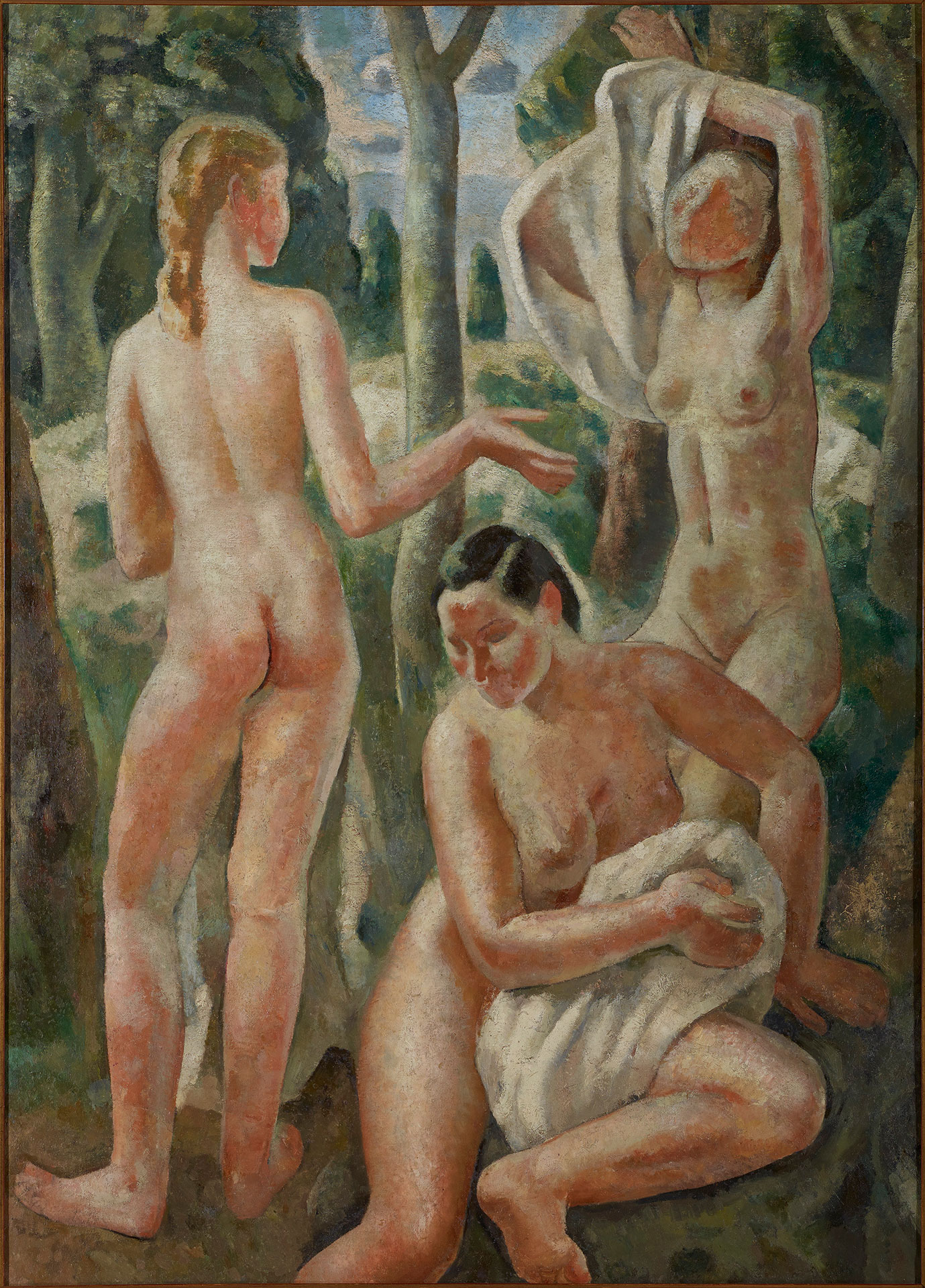
Aurelio Arteta (Bilbao, 1879 – Mexico City, 1940)
Girls Bathing
circa 1930–1935
WORK INFORMATION
Oil on canvas, 178 x 129 cm
Born in Bilbao but trained in Valladolid and Madrid, Aurelio Arteta rounded out his education in Paris starting in 1902 and in Italy in 1906. His early work bore the inevitable stamp of 19th-century naturalism, with the sporadic influence of Anselmo Guinea, Adolfo Guiard and Ignacio Zuloaga. A member of the Association of Basque Artists, he was an important contributor to the iconic Bilbao journal Hermes (1917). During this period his painting, always sober, acquired a hint of "Frenchified" Post-Impressionism. In addition to conventional canvases, he also practised mural art. His murals at the former headquarters of Banco Bilbao in Madrid (1920–1923) are good examples of his schematic style, with a dash of Cubist influence and what might be described as militantly Basque themes. Between 1924 and 1927 he was the director of the Museo de Bellas Artes in Bilbao, which still owns a considerable number of his works, including frescoes and the geometric landscape El puente de Burceña [The Bridge at Burceña] (ca. 1925–1930). His ascetic painting Los náufragos [Shipwrecked Men] (ca. 1930–1931, Museo Nacional Centro de Arte Reina Sofía, Madrid) represented Spain at the 19th Venice Biennale in 1934. During the Spanish Civil War he remained loyal to the Republic, and when it ended he went into exile in Mexico, where he died in a tram accident in 1940.
Muchachas bañistas [Girls Bathing] is a typical composition of Arteta's mature period, years after his decisive series of frescoes for Banco Bilbao in Madrid, when his already rather schematic compositions tended towards increasing simplification. The result was a Constructivist composition, now devoid of all rigidity, of a restrained archetypal scene with nudes; in terms of theme, spirit and execution, it is very similar to Arteta's Bañistas [Bathers] that won him the National Painting Prize in 1930, currently housed in the Museo Nacional Centro de Arte Reina Sofía. Two sketches of the figure on the right were published by Santiago Amón in 1972, but they were not dated or identified.
Arteta's style, close to that of Daniel Vázquez Díaz, can also be related in this work with things done years earlier in Catalonia by Joaquim Sunyer, a painter with a direct connection to Basque art. Edorta Kortadi has thoroughly explored Arteta's familiarity with Noucentisme. This seems to corroborate the old ambition of Juan de la Encina, a Basque critic active in Madrid, who in 1920 sought to unite the members of the aforementioned Association of Basque Artists (including Arteta) and the Catalan exponents of Noucentisme (like Sunyer) under the same independent banner, seeing in their work a deliberate attempt to distance themselves from the official Spanish art of the time, although it did not fall within the parameters of the avant-garde ideals emanating from Paris. [Francesc Fontbona]

